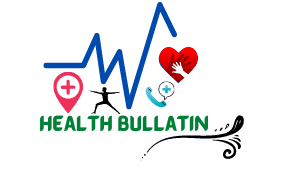We are all aware of the necessity of maintaining a healthy body, but did you know that a simple molecule contained in every cell of the human body may be the secret to heart health? Cholesterol plays a crucial role in the functioning of our bodies. However, high amounts of cholesterol in the bloodstream can cause a buildup of plaque in the arteries, hence raising the risk of cardiovascular disease. Here are several factors that can contribute to high cholesterol levels, including:
#1. Diet: A diet rich in saturated and trans fats, cholesterol, and processed foods can lead to elevated cholesterol levels. Animal products, such as meat and dairy products, as well as some baked and fried dishes, include saturated and trans fats. These fats can increase total cholesterol and low-density lipoprotein (LDL) cholesterol levels when consumed in significant quantities.
#2. Obesity: Being overweight or obese can lead to elevated cholesterol levels and other health complications. Weight gain can lead the liver to create more LDL cholesterol, which can subsequently build in the bloodstream and contribute to elevated cholesterol levels.
#3. Lack of Physical Activity: A sedentary lifestyle might contribute to weight gain and elevated cholesterol levels. Regular physical exercises, such as brisk walking or cycling, can help reduce cholesterol levels by enhancing heart health and reducing body mass index.
#4. Genetics: It is possible for high cholesterol to run in families and be affected by hereditary factors. An individual’s likelihood of having high cholesterol, heart disease, or stroke can be increased by a family history of these disorders.
#5. Smoking: Cigarette smoking can damage arterial walls and contribute to elevated cholesterol levels. Additionally, it increases the risk of cardiovascular disease and stroke.
#6. Alcohol Consumption: Consuming too much alcohol might increase triglyceride levels and contribute to excessive cholesterol levels. Triglycerides are a form of blood fat, and elevated amounts can raise the risk of cardiovascular disease.
#7. Medical Conditions: Certain medical conditions such as hypothyroidism, diabetes, and kidney disease can also contribute to high cholesterol levels. These disorders can impact cholesterol levels by altering hormone levels, metabolism, and kidney function.
The question on many people’s minds is, “How long does it take to lower cholesterol?” It depends on a variety of factors, including food, physical activity, body mass index, alcohol usage, and even heredity. However, decreasing cholesterol levels is possible with the appropriate strategy and commitment. In this blog, we will explore the various ways to lower cholesterol, the timeline for improvement, and the steps necessary for long-term maintenance.
Understanding Cholesterol
Cholesterol is a waxy, lipid-like molecule present in all bodily cells. It aids digestion by contributing to the creation of hormones, vitamin D, and bile acids. However, when blood cholesterol levels are too high, this can lead to cholesterol buildup in the artery walls, which increases the risk of heart disease. There are two main types of cholesterol: Low-density lipoprotein (LDL), also known as “bad” cholesterol, and high-density lipoprotein (HDL), also known as “good” cholesterol. LDL cholesterol contributes to the formation of arterial plaque, whereas HDL cholesterol aids in the elimination of excess LDL cholesterol from the bloodstream. It is essential for heart health to maintain healthy levels of both types of cholesterol.
Factors that Affect Cholesterol Levels
Several factors, including food, physical activity, weight, alcohol intake, and heredity, might affect cholesterol levels. A Health diet high in saturated and trans fats, as well as cholesterol-rich foods, can increase cholesterol levels. Inactivity, being overweight or obese, and excessive alcohol intake can all lead to elevated cholesterol levels. Cholesterol levels can be affected by genetics, since some individuals may be susceptible to high cholesterol levels due to their family history. Understanding the factors that affect your cholesterol levels will assist you in making the necessary modifications to your lifestyle to maintain healthy levels.
Lifestyle Changes
Changing one’s lifestyle is a crucial aspect in lowering cholesterol levels. This involves consuming a low-saturated- and trans-fat diet, increasing physical activity, and keeping a healthy weight. Eating more fruits, vegetables, and whole grains, in addition to selecting lean proteins, can help lower cholesterol levels. Regular physical exercises, such as brisk walking or cycling, can also assist in lowering cholesterol levels by elevating HDL cholesterol levels in the bloodstream. Maintaining a healthy weight can also help lower cholesterol levels, as excess weight can contribute to high cholesterol levels.

Medications
In some cases, medications may be necessary to help lower cholesterol levels. Statins are a commonly prescribed type of medication that works by blocking the production of cholesterol in the liver. Bile acid sequestrants are another type of drug that prevents cholesterol absorption in the intestines. Your doctor will collaborate with you to identify the optimal medicine type, dose, and length of treatment for your unique needs.
Timeline
The timeline for lowering cholesterol levels can vary depending on several factors, including the severity of the problem, the type of medication being used, and the success of lifestyle changes. On average, it may take between a few weeks and a few months to notice a considerable improvement. A study revealed that statins decreased cholesterol levels by 20-30% on average after 6-8 weeks. However, it is essential to keep in mind that everyone is unique and that the timing for lowering cholesterol levels may vary from person to person.
Tracking Progress
Regular cholesterol monitoring is an integral aspect of the cholesterol-lowering strategy. This can be accomplished with a simple blood test, which your doctor will probably recommend on a frequent basis. By monitoring your cholesterol levels, you and your doctor can determine if additional changes are necessary and track progress over time. Monitoring cholesterol levels can also ensure that drugs are functioning properly and that cholesterol levels remain within a healthy range.
Long-Term Maintenance
Cholesterol reduction is a lifetime process that requires continual effort to maintain healthy levels. This involves consuming nutritious food, engaging in regular physical activity, and taking prescribed medications. It is essential to maintain monitoring cholesterol levels to ensure they remain within a safe range, and to make any lifestyle or medication adjustments as needed. Additionally, it’s important to maintain a healthy lifestyle and avoid factors that can negatively impact cholesterol levels, such as smoking, excessive alcohol consumption, and a sedentary lifestyle. Regular medical visits can assist ensure that your cholesterol levels remain within a safe range and that any necessary adjustments are made promptly.
Conclusion
Lowering cholesterol levels is a lifelong journey that requires a combination of lifestyle changes, medication, and monitoring. While the timeline for improvement may vary from person to person, with dedication and effort, individuals can successfully lower their cholesterol levels, reduce their risk of heart disease, and improve their overall heart health.

